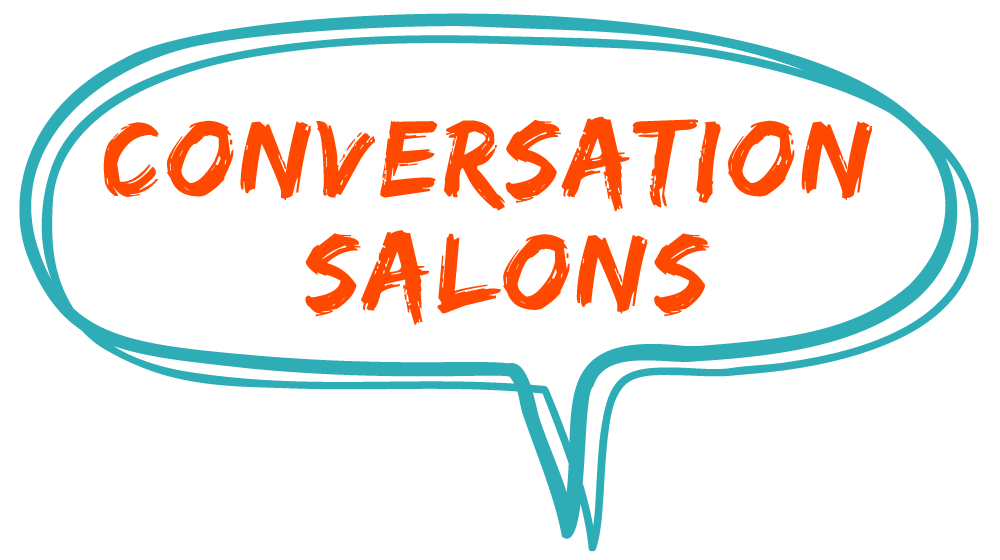
by Marty McGhee
We keep hearing about how we are more polarised that ever before, our societies, our politics, our public discourse, on social media. Is this true or was this always so? Twenty years ago social scientist Deborah Tannen in her book The Argument Culture wrote about the adversarial and aggressive nature of exchanges in the media, politics, courtrooms, academia and the Internet and the need to end dualistic thinking and move beyond debate to dialogue. So while not new and probably with us for thousands of years, polarisation does seem to have become considerably more extreme. Rooted in dichotomous thinking, the black and white of polarisation excludes a whole spectrum of perspectives and the possibility of together coming to some totally new realisations and understanding.
If we are to aim for this higher level of discourse, conversation with reason in mind means being aware of the power of words. Angry or dismissive words thrust out can have a devastating effect on listeners. But carefully deployed diplomatic words can, ultimately, achieve the same. In conversation the skill is to avoid offending by perfecting the art of really listening, applying emotional intelligence, gently probing, never judging and replying respectfully. But does that reduce the communication to conversation by design? And if so, how good and/or bad is that?
What is a Conversation Salon?
Well, a conversation salon is, by definition, a design – it is organised, the topics of conversation are supplied, there are rules of engagement which ask participants to be the best listener they can be, be respectful of other’s opinions and beliefs, and not to talk over others or talk too much. But after that, the conversation that ensues is natural. However, it is important to note that leaving out topics that could be emotive or cause participants to become entrenched is not part of the salon’s ethos. Unlike on social media where polarity around a topic can be played out without restraint or respect, and where abuse is a spectacle that draws people to watch and participate like a public punishment, in a conversation salon civility is as important as the topic. All speakers must practise respect regardless of how conflicting are the others’ opinions.
As well as practising respect for others by not purposely offending them, choosing to not take offence too easily is a learned behaviour that is equally important. What I mean here is that if one can take on board something they don’t like by thinking about why the other person said it, a discussion around that reason may create valuable insights into the mindsets of both parties. From this a deeper rationale may be mined and better mutual understandings produced, negating offence being taken or given. Ultimately this is one of the main goals of the salon.
What is not encouraged is backing down from an opinion just because the other person or persons have a more forceful delivery or a louder voice. One must learn to be assertive but never rude. In a conversation salon people are encouraged to push further to explore each topic in the hope of finding enlightenment through true dialogue. This, however, has to be done with each being aware that they have to handle and accept differences of opinion regardless of how far removed the other’s opinion is from theirs.
Who can attend a salon?
Conversation salons draw all types of personalities and people from all cultures. Because of this we learn to expect differences at the table. Some people are naturally more quiet and prefer to listen more and speak less. Some are the opposite and have a need to constantly express. Others hold the middle ground and are equally talkative and quiet. So only by experience can one find that they can adapt to the rhythm of the table they are seated at. As well as personality types, different cultures play a part in how people communicate. For instance, in Japan there are more than twenty ways to say no without ever using the word ‘no’ – because saying ‘no’ in Japan is a tricky subject. The Japanese will rarely give a direct no to an answer, preferring instead to give an indirect answer that conveys the message of no. In Ireland people don’t want to give offence by saying no and will sometimes say yes to a request or invitation knowing well they will not act on it. One renowned German trait is that of being direct, so a straight no is perfectly acceptable which Irish and Japanese people might find a bit shocking. So if we consider this mix at one table in a conversation salon we can see how differences might, initially, create a little tension or even offence. But we must be constantly aware of change and be prepared to quickly adapt in order to be accepting of different communication styles and personality types in order to make sure the conversation flows.
All of this is in order to create an atmosphere where healthy argument can take place. And where there is polarisation of opinion the correct tone and language can be used to diffuse heightened discussion (unlike on Twitter where incendiary language creates the desired explosion). But even with the best intentions and observing the rules of the conversation salon discussions can go wrong. People may feel that their fellow conversationalist’s opinion is the polar opposite to theirs and they both may find it hard to accept the other’s opinion. But in such cases, both parties can reflect on what they learned from the discussion. This may further their ability to have polarised conversation in the future but still return with the mindset that difference is there to be discussed not dismissed.
